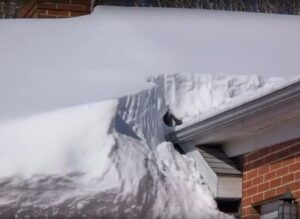WINTER WEATHER PREPAREDNESS
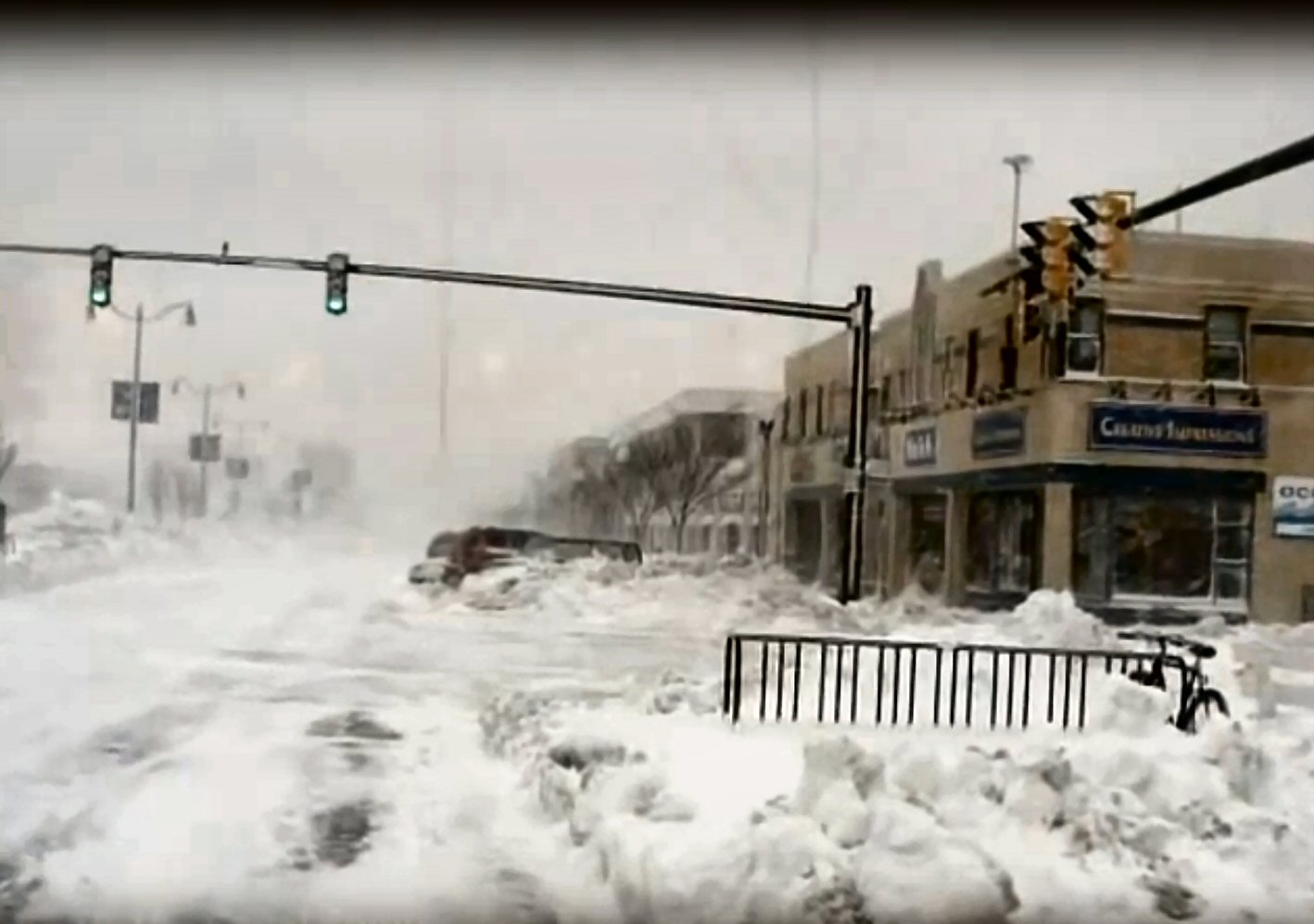
Downtown Rehoboth Beach / WGMD
Hurricane season is over, but this is the time of year that we see nor’easters and other winter storms that bring rain, wind, snow and ice. Delmarva is no stranger to winter storms – and has had some storms drop a LOT of snow. Like during the summer, you need to prepare your disaster kit and be ready for nasty weather when it’s in the forecast.
- Check your supplies
- Monitor weather conditions
WINTER STORM TERMINOLOGY
- Freezing rain: Creates a coating of ice on roads and walkways
- Sleet: Rain turns to ice pellets before reaching the ground. Sleet also causes roads to freeze and become slippery
- Winter Weather Advisory: Cold, ice, and snow are expected
- Frost/Freeze Warning: Below freezing temperatures are expected
- Winter Storm Watch: Severe weather such as heavy snow or ice is possible in the next day or two
- Winter Storm Warning: severe winter conditions have begun or will begin soon.
- Blizzard Warning: Heavy snow and strong winds will produce a blinding snow, near zero visibility, deep drifts, and life-threatening wind chill
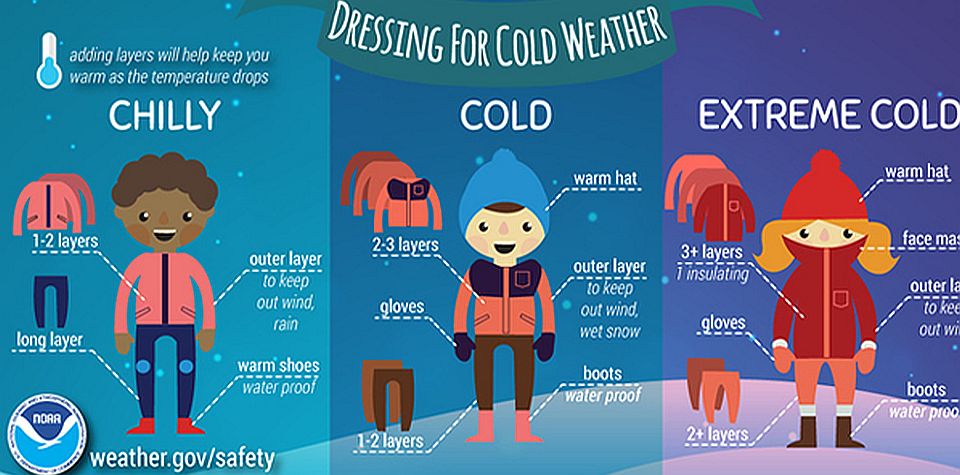
Image courtesy weather.gov
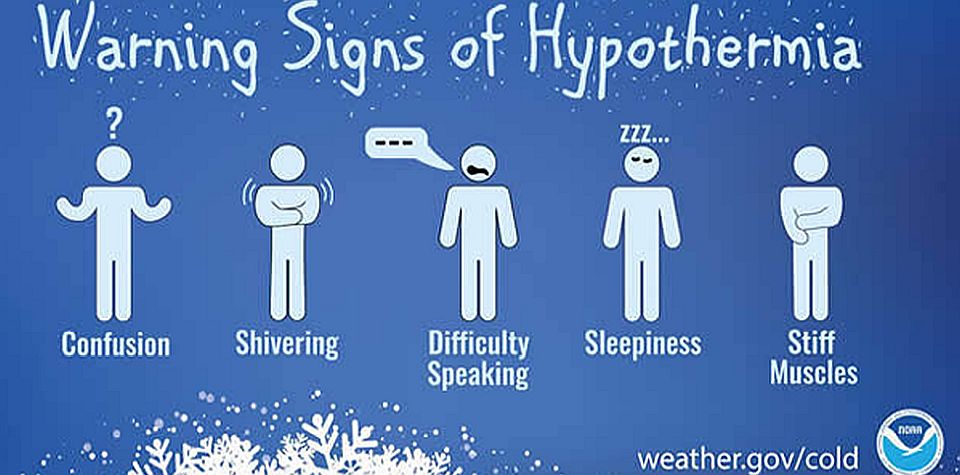
Image courtesy weather.gov
=================================================================
BEFORE THE STORM
- Spread an ice melting agent on walkways and driveways to keep surfaces free of ice; use sand to improve traction
- Have snow shovels and other equipment handy
- Have adequate clothing & blankets to keep you warm
- Winterize your vehicle
- Ensure antifreeze levels are sufficient to avoid freezing & fill gas tank ahead of time
- Ensure the heater and defroster work properly
- Check lights and flashing hazard lights for serviceability
- Check brakes, exhaust system, fuel & air filters, oil and thermostat, tires and windshield wiper equipment
-

Heavy snow on a roof during 2009 or 2010 / WGMD
Pack a winterization kit that includes an ice scraper, de-icer for door locks, blankets, and sand or kitty litter to provide grip if your vehicle becomes stranded - Create a Safety Profile for your family with the County’s free Smart911.com service to provide potentially life-saving information in advance
- Consider joining a local Community Emergency Response Team (CERT) group or learning CPR/first aid. Find more information about CERT at www.sussexcountyde/community-emergency-response-team
- Hire a contractor to check structural stability of your roof to sustain unusually heavy weight from the accumulation of snow or water if drains on flat roofs do not work.
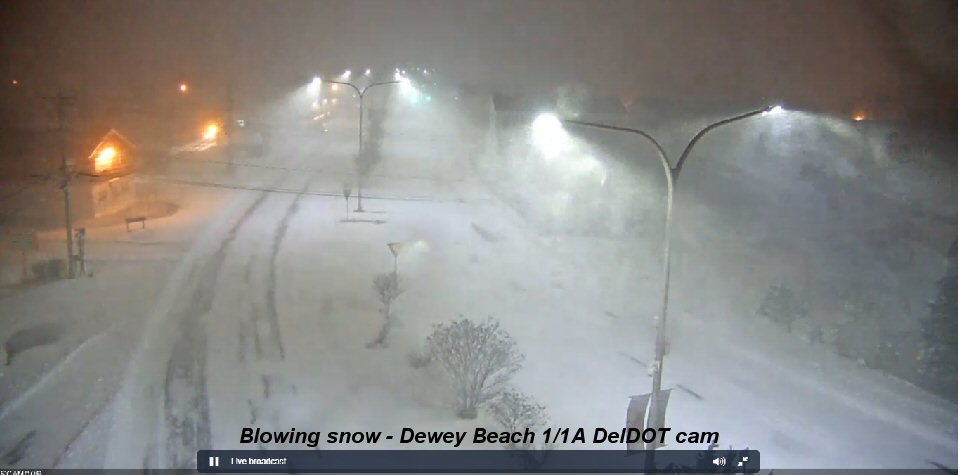
Blowing snow – Dewey Beach DelDOT cam at Route 1/1A during 1/4/18 Blizzard / WGMD
DURING THE STORM
- Listen to television, radio, or NOAA Weather Radio for weather reports and emergency information. Also, visit the Sussex County Emergency Management website and its social media channels, including Facebook at www.facebook.com/SussexCountyEmergencyManagement and X (formerly Twitter) at www.x.com/SussexCtyDE_EM for up-to-date information
- Eat regularly and drink ample fluids; avoid caffeine and alcohol
- Conserve fuel and power, if necessary, by keeping your residence cooler than normal. Temporarily close off heat to some rooms
- Limit unnecessary travel and heed all advisories and warnings.
- Dress for the Weather
- Wear layers of loose-fitting, thin, warm clothing rather than one layer of heavy clothing. Outer garments should be tightly woven and water repellent
- Wear mittens, which are warmer than gloves, as well as a hat
- Cover your mouth with a scarf to protect your lungs
- For more winter weather information and helpful tips, please visit the Sussex County website at www.sussexcountyde.gov/emergency-preparedness and click on the ‘Other Hazards’ link on the left to download a useful guide about preparing for winter storms and other types of hazardous events.
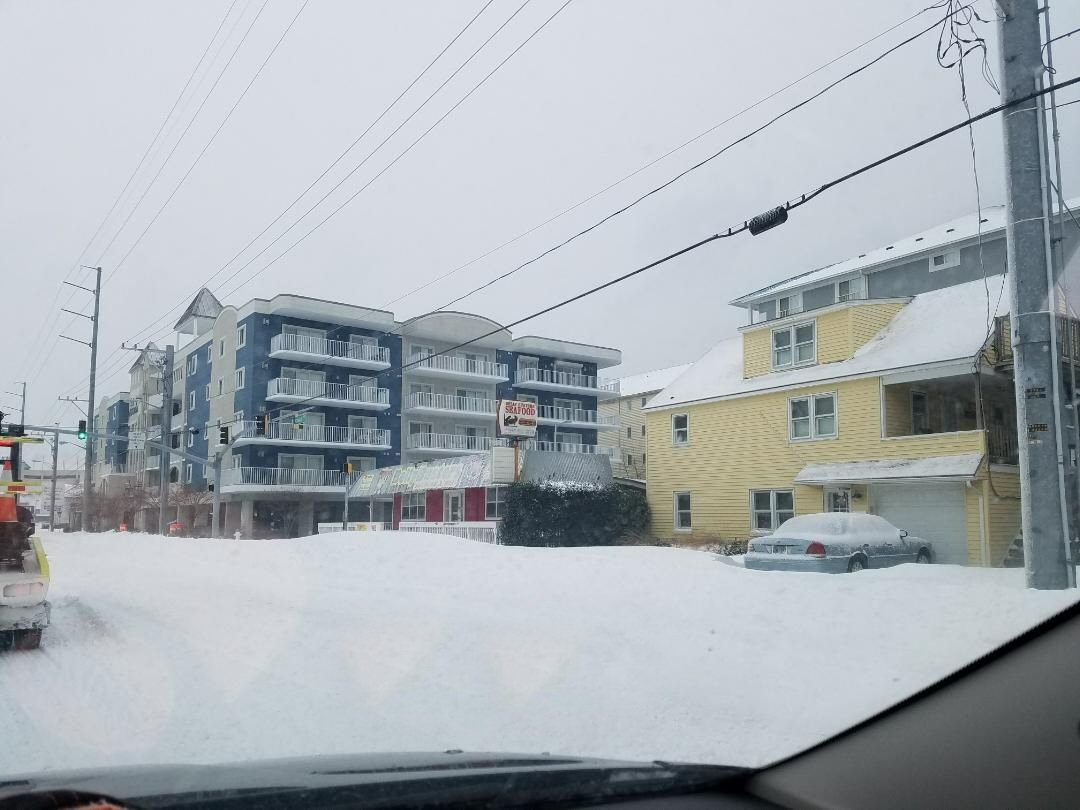
Coastal Highway in Ocean City at 45th Street during 1/4/18 blizzard / WGMD
TIP ON USING ENERGY EFFICIENTLY IN COLD WEATHER
- Check for drafts around windows and doors and seal up any openings with weather stripping or even a rolled-up blanket. A drafty house lets warm air escape and is much more costly to keep warm—especially on the coldest days of the season.
- Keep the fireplace damper closed tightly when not in use.
- Keep heating vents clean with a vacuum or broom and do not cover ducts with drapes or furniture that can block the airflow and possibly cause a fire.
- Use ceiling fans so the warm air that has risen can be redistributed around the room.
- Close off unoccupied rooms and regulate individual room temperatures if possible.
- Keep your thermostat set at a constant, comfortable level—usually 68-70 degrees. You can save 3 percent on your heating costs for every degree you reduce the temperature below 70 degrees.
- Replace the filter for your heat pump or furnace. Dirty filters block airflow and force equipment to work harder—this increases operating costs and can cause damage.
- Wrap water heaters with an insulation blanket. These blankets are inexpensive and easy to install.
- Remember to turn off unnecessary lights and other electronics.
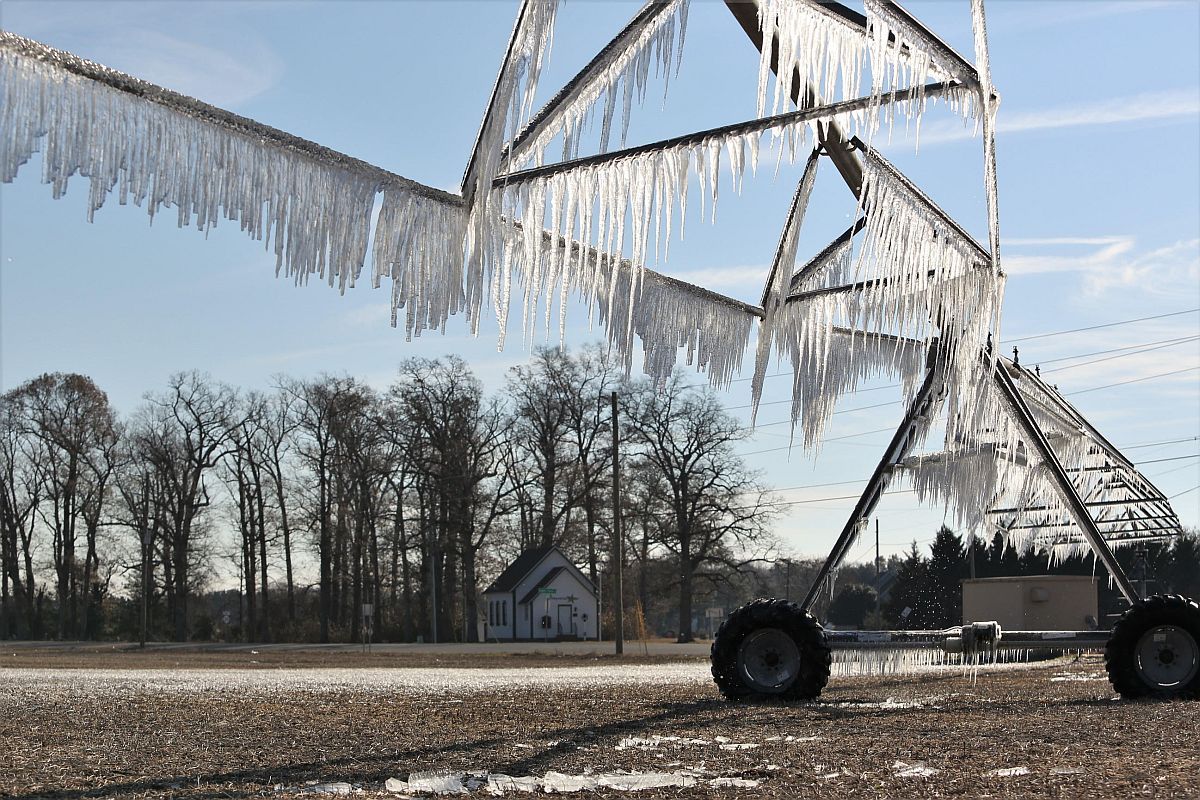
Frozen Irrigation in Millsboro / Image courtesy Nick Theophiles/WGMD
THE POLAR VORTEX
The polar vortex is a large area of low pressure and cold air surrounding both of the Earth’s poles. It ALWAYS exists near the poles, but weakens in summer and strengthens in winter. The term “vortex” refers to the counter-clockwise flow of air that helps keep the colder air near the Poles. Many times during winter in the northern hemisphere, the polar vortex will expand, sending cold air southward with the jet stream. This occurs fairly regularly during wintertime and is often associated with large outbreaks of Arctic air in the United States. The one that occurred January 2014 is similar to many other cold outbreaks that have occurred in the past, including several notable colder outbreaks in 1977, 1982, 1985 and 1989.
There are several things the polar vortex is NOT. Polar vortexes are not something new. The term “polar vortex” has only recently been popularized, bringing attention to a weather feature that has always been present. It is also not a feature that exists at the Earth’s surface. Weather forecasters examine the polar vortex by looking at conditions tens of thousands of feet up in the atmosphere; however, when we feel extremely cold air from the Arctic regions at Earth’s surface, it is sometimes associated with the polar vortex. This is not confined to the United States. Portions of Europe and Asia also experience cold surges connected to the polar vortex. By itself, the only danger to humans is the magnitude of how cold temperatures will get when the polar vortex expands, sending Arctic air southward into areas that are not typically that cold.
In short, there is no cause to be alarmed when you hear about the polar vortex, but you should be prepared for colder temperatures.
Information courtesy Sussex County Government, PrepareDE.org, Delaware Emergency Management Agency, Photos – Talk of Delmarva/WGMD listeners

